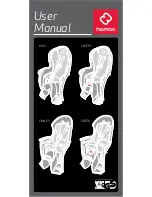
21
4. Check camera battery level and available storage space on your
memory card.
5. Draw a vacuum on the housing to check for leaks using the
optional vacuum kit, if using (sold separately).
6. Submerge the housing in a fresh water tank dedicated to
underwater photography equipment. Visually confirm that there are
no signs of water intrusion. One sign of water intrusion is a steady
stream of bubbles coming from one of the housing’s seals.
Entering the Water
1. Before entering the water, turn the camera on and operate each
of the housing controls to get a feel for using the camera in the
housing.
2. We recommend entering the water without your housing to ensure
you are comfortable and your life-saving equipment is in working
order. Once you are stable, have someone pass your camera
housing to you.
3. Submerge the housing at the surface of the water and visually
confirm that there are no signs of water intrusion. Look for water
droplets or fogging inside of the housing, or a steady stream of
bubbles coming from one of the housing seals.
4. Use your hand to gently flush away any small bubbles that may be
on the face of the lens port. Bubbles will produce soft focus spots
in your photo or video.
»
If water appears to be entering the housing, point the lens port
downward and return the housing to the surface immediately.
Please observe all necessary safety precautions. NEVER
ascend faster than accepted safety limits.
Shooting Underwater
•
Get as close as possible to your subject. For the best results, only
photograph subjects that are less than 6’ (1.8m) away.











































